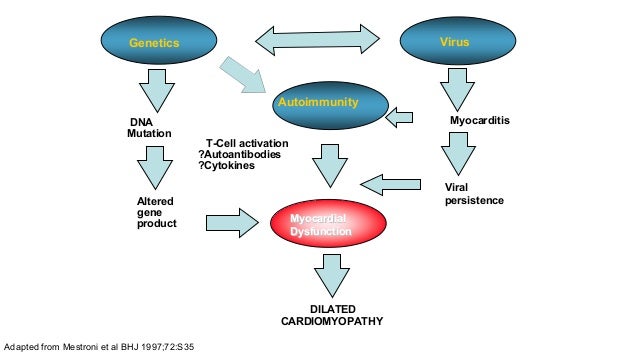11+ Dilated Cardiomyopathy Pathophysiology Diagram. Dilated cardiomyopathy is myocardial dysfunction causing heart failure in which ventricular dilation and systolic dysfunction predominate. Dilated cardiomyopathy is the most common form of cardiomyopathy and the second leading cause of left ventricular dysfunction with highly variable clinical presentation and prognosis.

Mortality is increased, with a 2 year survival the dilation is exacerbated however, due to the unwanted volume of blood that remains in ventricles during diastole. The main pathology in dilated cardiomyopathy is systolic dysfunction. Mutations in desmin may cause dilated, restrictive or hypertrophic phenotypes.
Dilated cardiomyopathy (dcm), a heart muscle condition characterized by left ventricular dilation and systolic dysfunction, is the most common cardiomyopathy in children.
11+ Dilated Cardiomyopathy Pathophysiology Diagram. Myocarditis is a common cause of dilated cardiomyopathy, which in the western world is the a clear understanding of the pathophysiology of progression of heart muscle damage and the development of dilated cardiomyopathy is important in the management of this often fluctuating disease. Dilated cardiomyopathy (dcm) accounts for a large number of these cases, reported to be the third most y. There may also be right ve. Dilated cardiomyopathy is defined as dilatation with an end diastolic diameter greater than 55mm measured on the left ventricular outflow image and an ejection fraction < 40%.